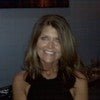Description
About This Video
Transcript
Read Full Transcript
Welcome today one. Today we're going to be releasing the hamstrings, a big subject for many people. And before we start, we'll do a test, a pretest to see what your range of movement is before and after this work. So just like you do wall roll down in a normal net math class, get your hips up against a wall and your head up against the wall. I like to work with a balls that we'll be using, although it doesn't really matter and very slowly roll down towards the floor. Now as you roll down, just notice what kind of sensation you have in your legs.
Is One arm longer than the other? Do your hands touch the floor at the same time? If they touch it doesn't. It's not a competition, it's just a process of checking how far down you go. So at the end you can compare your range of movement. So that's one, um, little pretests and the other one is called a runner's stretch. In a runner's stretch, you will start on the floor, your foot, your knee, and your back foot aligned up.
If you're a tight person and you could not get to the floor, I highly recommend getting blocks so that you have something to hold on to you. Put your hands so the hands are lined up right with your feet and then you slowly see if you can stretch both feet, get your heels to the floor and then we'll do the other side. Now it doesn't really matter if we how, what your range a moment is. It matters that you test to see where you're at because that's all that matters. And then have you changed after this work? So same thing, I'm lining my foot, my knee, my foot in one line.
I'm taking an imaginary line here with my toes so my fingers are lined up with them. And then again straightening out the legs, checking, can I straight my next or am I here, am I here? Just kind of feel your own body, observe the sensations and then remember them. Cause in 20 minutes I hope they go into be quite different. So I will be working on my right hamstring using the small ball. It's more spot specific and more localized. If you have, if you starting this work for the first time where you find it very painful, use the bigger ball, it will diffuse the sensation and the goal is just to open up your body, not to abuse your body.
So places the ball right under my sit bone and I'm bending my knees a little bit just to stay balance, lifting my body up, rolling my bottom a little bit forward to the ball is pulling the muscles of the glute up away from the sit bone back to the sit bone and rolling back. Now what am I doing is I'm going to be very and consciously moving back and forth and with this process I'm starting to address all the attachments that are coming into the sit bone that the hamstrings are part of actually also the muscles of the back and they get very, very tight and stuck. A lot of adhesions happen up there. So you may be quite surprised at the sensation of maybe pulling or gentle stretching that's happening and it's loosening up your bones and restoring a more um, uh, lubricated structure for yourself. Then I'm back up straight on the sit bone. Now just as a note, some people find it a bit hard to hold their body weight up and if you're one of those people having two blocks so you can hike yourself up, they find it very, very helpful. You do not have to have both legs bent.
These are just optional choices for you. The whole thing is just to be able to get onto that seatbelt. Now I'm rolling my sit bone to the left. So the ball is moving out and it's actually riding my pelvic floor back up and rolling. Just a little tiny bit in again rolling out.
So I'm just feeling this manipulation around that pointy bone and all of the attachments into it. And then one more time, I'm rolling out a little bit, rolling in a little bit. And now I'm starting to circle around the sit bone very consciously. Now if you find a spot that actually painful for you or really, really tight, go slower, stay there and breathe. If it's really tight, you can breathe in and lift off a little bit and then sink back down. So you gradually talk to your own body. Very, very important.
Your body will change super fast, but you have to have an honest loving relationship with it as you go along. And you may be amazed at how great you feel. Now I'm reversing the circle and the one of the thing I'm paying attention to as much as I can to have my leg bone tracking straight forward because um, you know, we get used to all sorts of funky patterns in our alignment and we want to find the places where the muscles are super tight and it may be very surprising and you may find it uncomfortable to have the legs more or less straight. Go for it. Anyway, now here I am, I'm back on this sit bone. I'm just gonna move these blocks a little bit out of the way and now I'm taking my bottom back and as my bottom come back, I rolled forward and I'm in the tendance where the hamstrings connect up into the sit bone and very slowly our roll to the outside.
So the ball's rolling this way and then I'm rolling to the inner side. Now as you do this, you're going to hear clunk, clunk, clunk because you're going over stringy fibrous elements which are the tendons and the sensation is normal. If it's very painful, you probably have calcification going on and it's starting to restore your tendency tendency to normal. Also be sure that your knee is not rolling out in the end if you can control it. Just going to move a little bit forward here to keep ongoing. Now from here I'm moving maybe a third of the way back, a third of the way down into my hand saying, now I'm in the muscle and some people like to sit down and push into the ball.
I have my leg long so my muscle is not relaxed and I'm keeping my alignment integrated and straight. I'm rolling a little bit out and then rolling a little bit in. So we have three hamstrings and I'm basically visiting all three of them. It can be very often that people can have once one hamstring that does all the work and maybe one or two that do very little or they're all glued up and mixed up with other muscles. And by doing this you're starting to not separate them but kind of give them each their own life again, rolling down a little bit more. I'm halfway down my hamstring now. Rolling in, rolling out, coming a little bit more to the middle, rolling back a little bit further.
Rolling out, rolling in. It does not really matter if you rolling in or rolling out and now are row all the way down just above the knee. Again, a little bit out, a little bit in coming back to the middle, checking that my alignment is straight and this is the delicious part where I roll very, very slowly. Putting as much pressure as I can into the ball up until I get all the way to the top to the sit bone and then I roll through the sit bone onto the floor or onto the bed. Wherever you are. Take the ball out and just for a minute, do a check. Check how your legs feel. Right now.
My right leg is much heavier than my left one. The bones are sinking down and I can feel that that leg has opened up. I hope you have the same experience. So now that we've finished the right leg, moving over to the left one, normally I just shift the ball but I will move over to this side so you can see and just as a note, some people find it hard to be working at this angle because the hamstrings are tight and I've often worked with sitting on a Cadillac or just in a chair in their home and showing them the whole routine sitting in a chair. And anybody can do this. 80 year olds that are very uncomfortable, they can actually get that ball under their hamstrings and they love it.
So here we go. Ball is now on my sit bone. I'm going to roll the sit bone forward, roll the sit bone back. This is a very different journey for me. On this side you will probably find one leg is quite different than the other because the tissue has problem solved all your life in, in whatever way it has and created. It's almost like a pattern and you will start to find your own patterns and where they will not add up or pulling.
And the deliciousness of actually being able to ease that up back on the sit bone. Roll the ball to the outside so it's pushing the greater trocanter a little bit out. Rolling a little bit in towards my tailbone, but I'm just on the inside of the sit bone rolling out, rolling in. And by the way, if you find it's very tense, very tight, please spend more time doing it in time. You can revisit this then rolling around. I'm going counter clockwise. It makes no difference which direction you go because you do both and you try to stay tall and push into the tissue as much as you can.
This is about holding your muscles tone to restore an elasticity to them and then reversing. And if I was to share, I would recommend keeping the knee straight, but because I have some restrictions in my left leg, I cannot actually bring my leg up as much, so I just do my best. And the same would apply for you. You're working towards optimal organization of your skeleton. You're not trying to force it when it's not ready yet. I'm back on my sit bone. Rolling down into the tendon, lengthening the leg out so that there's pressure right into the tendon and the muscles, cause I'm hamstrings will become tendons that attach to the Sig bowl rolling out and rolling in.
So middle hamstring out or hamstring, middle hamstring in or hamstring clunk, clunk, clunk. That's what you probably were feel. That's what your body's like rolling. Maybe a third of the way down my hamstring pushing down is a way to get more pressure. Your muscles when they're super healthy should be very elastic.
You should be able to get that sensation of the ball to go all the way to the bone. Kind of like a cat or tiger. Very elastic, very no tension but tons and tons of, because it's so healthy, there's so hydrated. Sim just rolling back and forth, rolling further dance and two thirds of the way down. Rolling a little bit out, rolling in. Now I'm using my leg like a fan, but if you notice I'm not roll rotating the knee, the knee stays straight so I'm actually getting into the hamstrings or not the different muscle groups because I want them lubricated.
I want them talk to rolling a little bit further back. So I'm just above the knee, right where the hamstrings connect into the knee. Rolling a little bit out. This is delicious because now I'm getting into where the attachments are coming and sometimes there's a lot of tension where the hamstrings connect in with the knee and so you, it's like a deep, wonderful massage that you're giving yourself and then back to the middle. So I'm hopefully on the central hamstring.
And then with pressure into the ball, I'm moving myself up, kind of rolling and lengthening the hamstring out. The more you can keep your legs straight and long, the better. Keep rolling up. I'm actually pushing the hamstring tissue up into the sit bone lifting and lengthening my spine rolling forward. I can bet if you bend your knee, little trick, you ask that hamstring to lengthen even more because it has to give to allow these two hinge joints to stay stable and then rolling through that sit Boehm pushing my glute muscles up feels great.
We all want high toned buts and coming off stretching the legs out for a minute. Oh look at that. My knees are even now. My legs are same distance to the floor. My hips feel more stable. So I know I opened up and kind of cleared up some imbalances that exist here. So please check note how you feel. And now we're going onto the next one.
So this next part we work with a bigger ball. You can use a yoga block in a crunch. I mean there's lots of things you can do, but you want to have something big enough that you can place between your femur bones really high up. Now this is a form of unwinding the leg programming you may have, I'm sure you all know, some people walk turned out, one leg goes in one direction, one leg goes in the other. So there's these pockets of areas that are muscles that are locked into a shape and we want to let the body let go of it. So starting a pie, I'm slightly bending my knees, I'm checking that my feet are going forward, my knees are going forward, hips, the whole body's straight. And when I bend over, I'm checking that the ball is still in the middle. It has a tendency, sometimes it can pop forward or back or our muscles can start to rotate.
We want to try and keep this alignment and if you can get your hands on the floor, that's wonderful. If you need yoga blocks, put your hands on yoga blocks. It doesn't really matter how low you are, where you are. It matters that you spend a little time hanging out here and letting your joints let go and your muscles let go. So at the start I've got my knee bent and then very slowly I'm starting to lengthen the legs, but I'm watching my kneecaps to make sure they're not rolling out or going into some weird place that's not meaning that the femur bones are going straight down the shinbone straight down and the feet forward because that's our optimal unraveling direction we're working towards. I tend to be, I'm a very loose person. I've done this work for a long time, so I'm probably not the best example of someone dangling forward here, but I've seen many people start out and as I keep relaxing and relaxing, the hamstrings shift the joints in the hips shift and they drop lower.
Now I'm bending my knees, taking the ball and moving it halfway down my hamstrings. I'll turn sideways now, so it's halfway between the knee and the hip. Again, I'm checking that the ball isn't popping forward and back. The knees are tracking over the feet and again, I'm staying down here and I'm holding the ball to encourage my adductors to stay on the inner part of my legs. If I let go, the ball would pop forward and my legs would rotate out. That's my pattern and I'm keeping the tissue so the hamstrings actually can, oh, I just felt my outer hamstrings release to a whole other level. So you just want to relax into this watch to keep checking.
Every so often you can bend the knees and then lengthen them again. Watch you're not locking back in the knees. I prefer a micro bend so the muscles actually are what gets reorganized. Then one that one downs. I've moved just above the knee and the same thing again, I'm watching my kneecaps. I sometimes, because I'm flexible, I like to grab my elbows and that the back. Now my back is starting to release the hips and letting go.
You want to keep checking feet, knees, hips back over and over again and notice when your body's ready to let go. Now I'm moving down just below the kneecap. So top of the cabs, this is what gets even more interesting to very slight pressure inwards. Again, lengthening down, letting the hips open, let the hamstrings open and widen. Let the legs Elongate if you want. If you're very flexible, you can check that your sit bones are above your heels. If you're less flexible, just allow the body to release.
So your and then middle of the cabs checking that the shinbones are straight but your arches are not dropped. The important to keep the arches straight, relaxing down again, nice and long, letting everything unraveled by now you have probably dropped a whole bunch deeper because about the legs have kept unraveling. Now the most interesting part is right above the ankle bowl because you want the shinbones pushing into the ball, but you need your arches lifted and your feet going straight forward and you check again the knees, the hips is everything going straight and then how much I can feel the whole widening and rotational aspect of my legs shifting around so everything is long. Releasing everything down should feel really tranquil and then when your cells back up and feel your new legs. So now that we've finished these little routines, we're going to do a retest of the same moves we did at the beginning. I'm going to work with the bigger ball just because I happened to be with me again. My back is support is how am I sacred? Him, my rib cage, my head on my feet in a Pilati stance.
Find also work parallel. Replicate what you did before. Drop your head. The only reason you're holding a ball is to see if you can notice if there are imbalances between the right and left side, maybe in the ribs, just go as low down as you're able to go. Notice if there's any shift in your range of movement and how your legs feel, how the right and left side of the body feels and how your spine feels. Even though we are addressing the hamstrings that can affect your spine.
So that was one retest. The other one is the runner's stretch. So again I'm lining up foot, knee, foot, hands lined up with your toes, everything straight and see what happens when you lift your legs up. It's always nice also to have someone look at your hips to see if they are, even I, I'm not having anybody check mine so I hope I'm even and then I'll do it sideways with my other leg again. Foot, knee, foot, fingers lined up and lengthening out and yes, my left hamstring, which tends to get tight as a whole lot looser now and then coming up, I hope you notice the difference. Notice how you feel for the rest of the day. Notice what it's like to sit, to walk, to stand what your posture feels like. I hope you feel looser and more graceful. Thank you.
Unravel Your Body Challenge: with Niedra Gabriel
Comments
You need to be a subscriber to post a comment.
Please Log In or Create an Account to start your free trial.
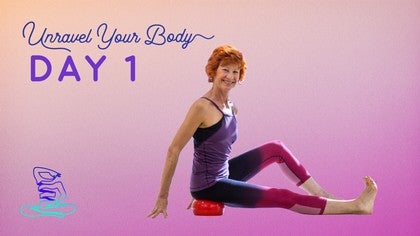
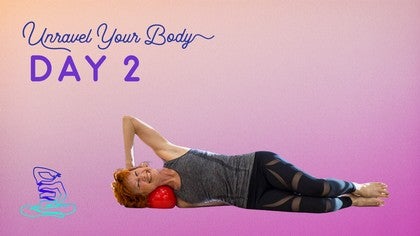
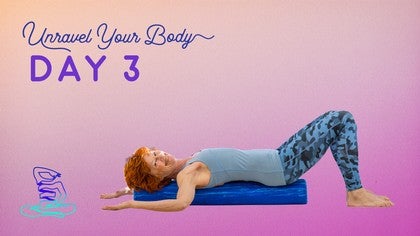



































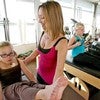

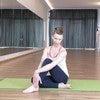
 thank You :)
thank You :)



